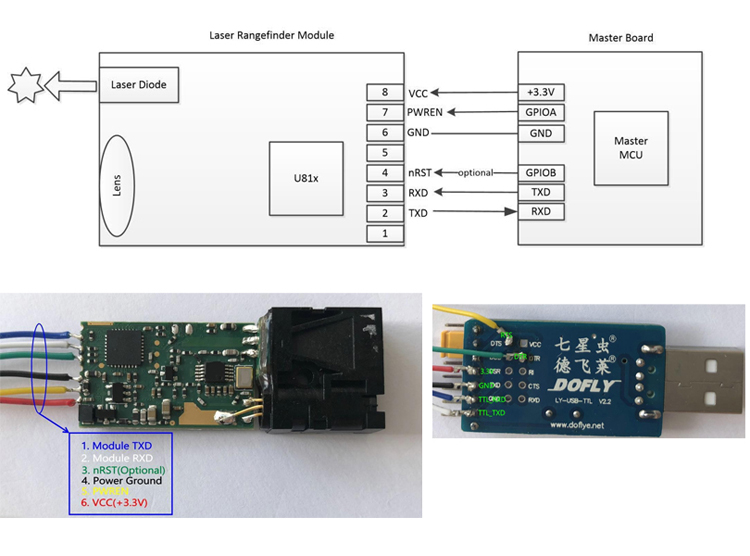Shanghai Xitang Biotechnology Co., Ltd. 021-55229872, 65333639
Rat homocysteine (HCY) ELISA kit instruction manual
 ( used in serum, plasma, cell culture supernatants and other biological fluids )
principle
This experiment used double antibody sandwich ABC-ELISA. The anti-rat HCY monoclonal antibody was coated on the microtiter plate, the HCY of the standard and the sample was combined with the monoclonal antibody, and biotinylated anti-rat HCY was added to form an immune complex attached to the plate, horseradish peroxidation. The enzyme-labeled Streptavidin is combined with biotin, the substrate working solution is blue, and finally the stop solution sulfuric acid is added. The OD value is measured at 450 nm, and the HCY concentration is directly proportional to the OD value. The standard curve can be used to obtain the HCY in the specimen. concentration.
Kit composition ( 2-8 ° C preservation)
Coated Wells | 96 holes | Enzyme Conjugate | 12ml |
10× specimen dilution (Sample Buffer) | 12ml | 20×Wash Buffer | 50ml |
Standards: 400nmol/bottle | 2 bottles | Substrate working fluid (TMB Solution) | 12ml |
Primary antibody working solution (Biotinylated Antibody) | 12ml | Stop Solution | 12ml |
Prepare reagents and collect blood samples
1. Collection of specimens: serum, plasma (EDTA, citrate, heparin anticoagulation), cell culture supernatant, tissue homogenate, etc., as early as possible, stored at 2-8 ° C for 48 hours; longer time must be frozen (-20 ° C Or -70 °C) to avoid repeated freezing and thawing.
2. Standard solution preparation: Add 1 ml of distilled water before use and mix well to prepare a solution of 400 nmol/ml. Set 8 tubes of standard tubes, and add 300 ul of standard dilution solution to each tube. Add 400 ul of standard solution of 400 nmol/ml to the first tube, mix and aspirate 300 ul with a pipette, and transfer to the second tube. Repeat the dilution in this way, and remove 300 ul from the seventh tube and discard it. The eighth tube is a blank control.
3. The 10× specimen dilution was diluted 1:10 with distilled water (example: 1 ml concentrated dilution + 9 ml distilled water).
4. Washing solution: diluted 1:20 with distilled water (example: 1 ml concentrated washing solution added to 19 ml of distilled water)
Test procedure
1. Loading: Add 100 ul of standard or sample to be tested in each well. Mix the reaction plate thoroughly and let it stand at 37 °C for 120 minutes.
2. Wash the plate: Wash the plate thoroughly with washing solution 4-6 times, and dry it on the filter paper.
3. Add 100 ul of the first antibody working solution to each well. The reaction plate was thoroughly mixed and placed at 37 ° C for 60 minutes.
4. Wash the board: the same as before.
5. Add 100 ul of enzyme-labeled antibody working solution per well. The reaction plate was placed at 37 ° C for 30 minutes.
6. Wash the board: same as before.
7. Add 100 ul of substrate working solution to each well and let it react at 37 ° C for 15 minutes in the dark.
8. Add 100 ul of stop solution to each well and mix.
9. Measure the absorbance at 450 nm using a microplate reader within 30 minutes.
Result calculation and judgment
1. All OD values ​​should be subtracted from the blank value before calculation.
2. Using standard products 200, 100, 50, 25, 12.5, 6.25, 3.12, 0 nmol/ml as the abscissa and OD as the ordinate, plot on the coordinate paper and draw the standard curve.
3. Find the corresponding HCY content on the graph based on the OD value of the sample.
Kit performance
1. Sensitivity: The minimum HCY detection concentration is less than 1.5 nmol/ml.
2. Specificity: Recombinant or natural rat HCY can be detected simultaneously. Does not cross-react with other cytokines in rats.
3. Repeatability: The coefficient of variation in both the plate and the plate is less than 10%.
Precautions
1. It is recommended to make double holes for the above standard holes and samples to be tested. The standard curve should be made at the same time for each measurement.
2. The washing process is critical. Insufficient washing will result in an accuracy error and an erroneous rise in the OD value.
3. After the slats are opened, the remaining slats should be sealed again to keep the slats dry .
4. This kit should be stored in a 4oC refrigerator.
5. This kit is for scientific research only and cannot be used for clinical diagnosis!
New product of U85 micro laser distance sensors use highly focused class 2 laser to detect objects or measure distances, and can return a measured value via varieties intface( serial, usb, rs232, rs485, bluetooth etc.). The electronic distance sensor is a very small Laser Distance Sensor, but high resolution up to 1mm and long distance measuring sensor - teachable measuring range of up to 30m. Extremely accurate distance sensing sensors, errors down to ± 1mm. And the mini sensors and measurements support continuous measurement function, great for compact solutions(eg: robots) with the smallest Laser Distance Sensor of the world!

Parameters of U85:
|
Accuracy
|
±1 mm (0.04 inch)
|
|
Measuring Unit
|
mm
|
|
Measuring Range (without Reflection)
|
0.03-20m/0.03-30m
|
|
Measuring Time
|
0.1~3 seconds
|
|
Laser Class
|
Class II
|
|
Laser Type
|
620nm-690nm, <1mW
|
|
Size
|
41*17*7mm (±1 mm)
|
|
Weight
|
About 4g
|
|
Voltage
|
DC2.0~3.3V
|
|
Electrical Level
|
TTL/CMOS
|
|
Certifications
|
CE, FCC, RoHS, FDA
|
|
Operating Temperature
|
0-40 ℃ (32-104 ℉ )
|
|
Storage Temperature
|
-25~60 ℃ (-13~140 ℉)
|
Micro Laser Distance Sensor
Mini Laser Distance Sensor,Optical Laser Distance Sensor,Smallest Laser Range Sonsor,Laser Measuring Sensor
Chengdu JRT Meter Technology Co., Ltd , https://www.cdlaserdistancesensor.com
